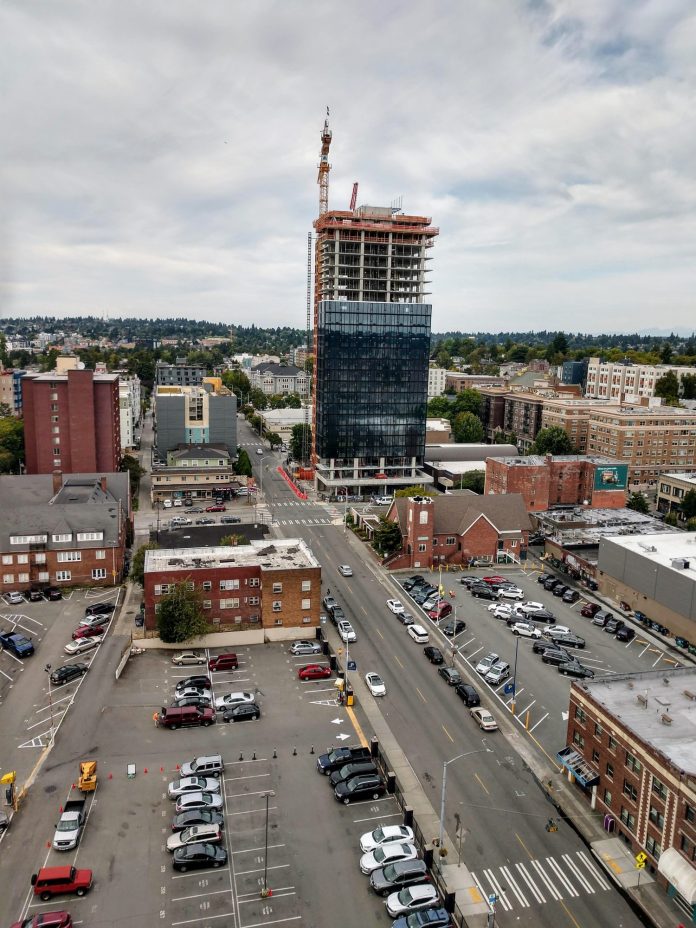
The Northgate Link Extension will open in 2021, but the neighborhoods around the stations are already transforming. We’re taking a closer look at the build-up happening in each neighborhood in a three-part series that already examined Northgate and Roosevelt.
Trip times to Capitol Hill, Downtown, and other destinations served by the light rail will be trimmed significantly. For the University District (U District), Sound Transit says the train trip to Downtown will be just eight minutes. This will revolutionize the way people get around.
With rapid transit boosting an already “hot” neighborhood, builders are betting the U District will be a very popular place to live and are adding highrises accordingly–this is despite some handwringing that mandatory inclusionary zoning requirements were set too high, particularly for U District highrises. In U District highrise zones, the City requires developers reserve 9% of their units as affordable at 60% of area median income, or, alternatively, to pay an in lieu fee that was initially set at $20 per square foot but is rising with inflation. Projects vesting right now would pay $21.83 per square foot in “M1” intensity zones in medium cost areas like the U District.
U District Rises
We’ve covered how the passage of high-rise zoning in the University District unlocked a burst of tower proposals all subject to Seattle’s version of inclusionary zoning–dubbed Mandatory Housing Affordability (MHA). The first project out of the gates–dubbed “The M”–appears to have recently topped out at its planned 24 stories.
Eight other towers of at least 20 stories are planned for the U District and have progressed to various stages of the design review process. A plan for twin student housing above a new University Temple church will have early design review on October 7th. A proposal for a 34-story tower was announced last week as the developer (Blume Co. Real Estate) tapped VIA Architecture and submitted a site plan for 350 apartments. It’s the first of this new wave to crack 30 stories.
The first eight highrises out of the gates account for about 2.5 million square feet of development, which would equal more than $50 million in MHA payments or the equivalent on-site performance. Certainly not the drought MHA-is-too-high doomsayers predicted.
With at least another 10 midrise projects planned, more than 3,000 homes are in the works within a short walk of U District Station. A few projects may have vested before MHA, but we’re talking something like 300 affordable units in the pipeline given the 9% inclusionary requirement in the area. In other words, we appear well on our way to the 610 to 920 affordable units the City projected MHA would generate in the U District in the first 20 years. These affordable homes will be reserved for households making less than 60% of area median income–and they’ll stay that way for 75 years.
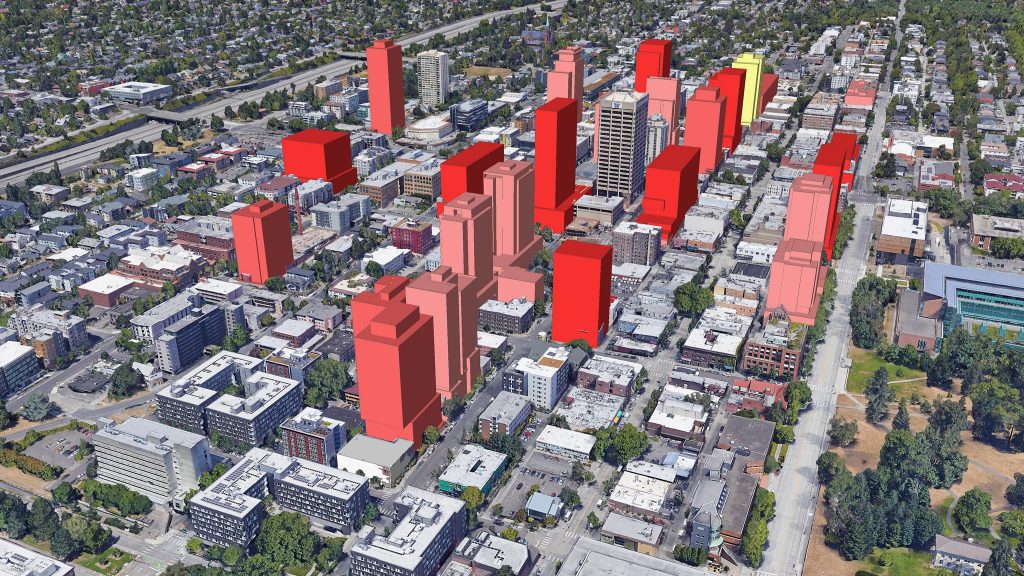
The U District is likely to become the second major highrise area in Seattle outside of the Downtown core. Already a few highrises exist there, with tallest among them UW Tower, formerly a Safeco office building. The 325-foot-tall tower was completed in 1975 before the neighborhood was downzoned in subsequent decades. But the neighborhood is gearing up for highrise density again with the 2017 MHA rezone.
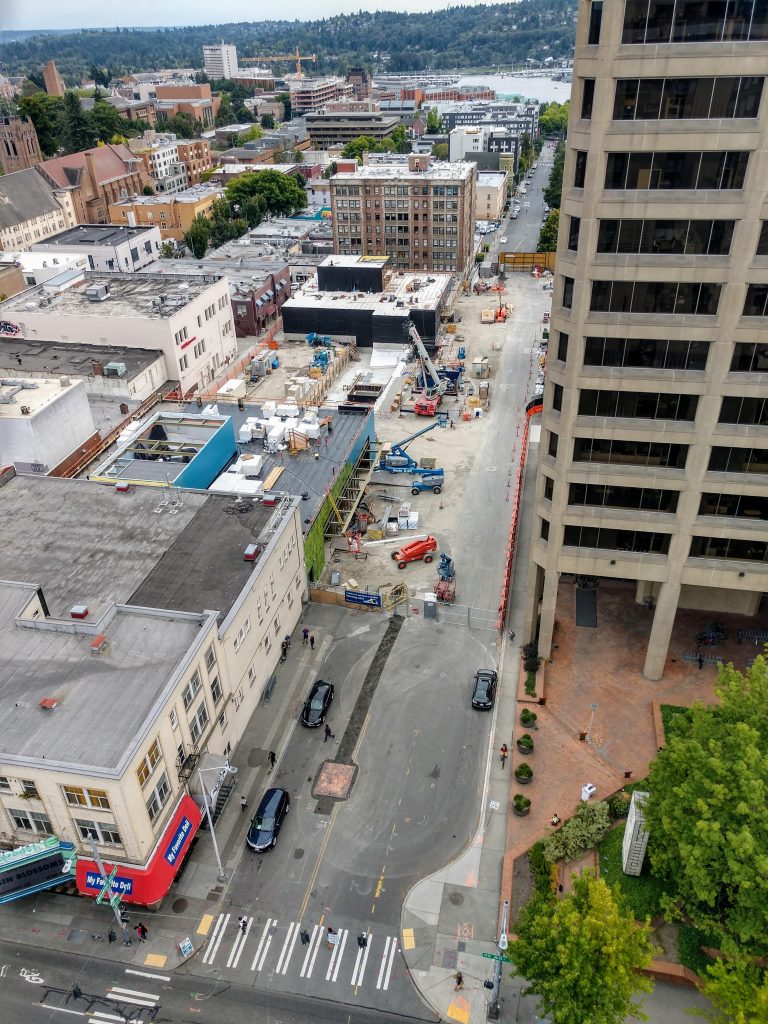
In 2021, light rail will arrive right to the doorstep of the neighborhood’s tallest building. U District Station will have an entrance on Brooklyn Ave NE just across from UW tower, with NE 45th St–the main east-west artery through the area–just to the north. Another entrance will be closer to NE 43rd St.

The U District boom is linked to growth at the University of Washington (UW). The university is growing rapidly and planning to add space for thousands of additional students in its master plan–already more than 32,000 undergraduates and 14,000 graduates are enrolled at the Seattle UW campus. “The university estimates that space needs at the main campus will grow through 2028 as another 8,675 students and 4,649 faculty are added,” Stephen Fesler reported. “That equates to 20% growth over the total student and faculty population of 67,155 today.”
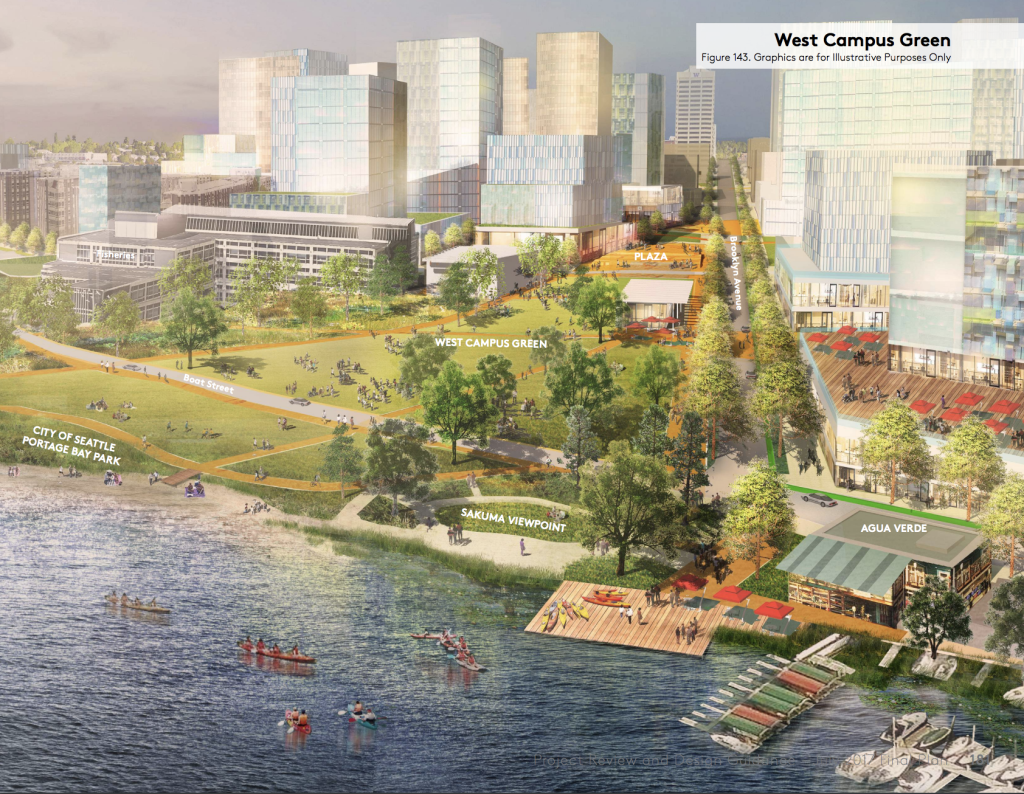
All that growth of classroom and office space at UW means demand for U District apartments will also continue to climb. The flurry of tower proposals suggest developers think that demand is real and MHA isn’t scaring them away (granted the local economy will need to stay strong for all these tower proposals to move swiftly to construction.) Assuming the economy continues to chug away, it might not take that long for U District’s core to get built out and for all that zoned highrise capacity to be used up. But we could look to the east.
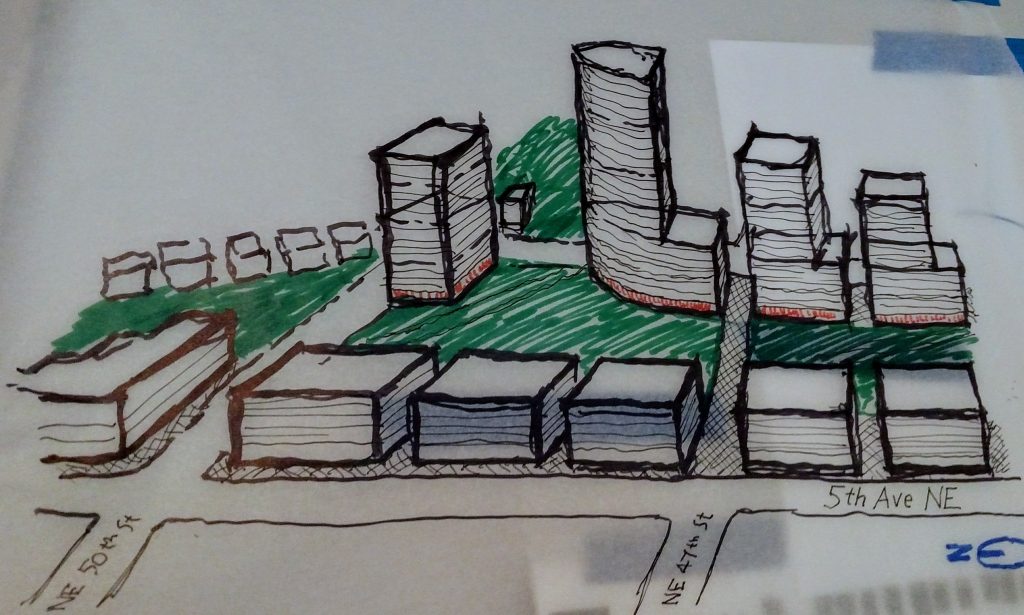
One idea to expand the neighborhood, adding more room for housing and better walking and biking connections east to Wallingford and beyond is an I-5 lid. Lid I-5 hosted a charrette on designing the U District I-5 lid in 2017. Though it seems far-fetched now, it might not seem so whimsical in the future.
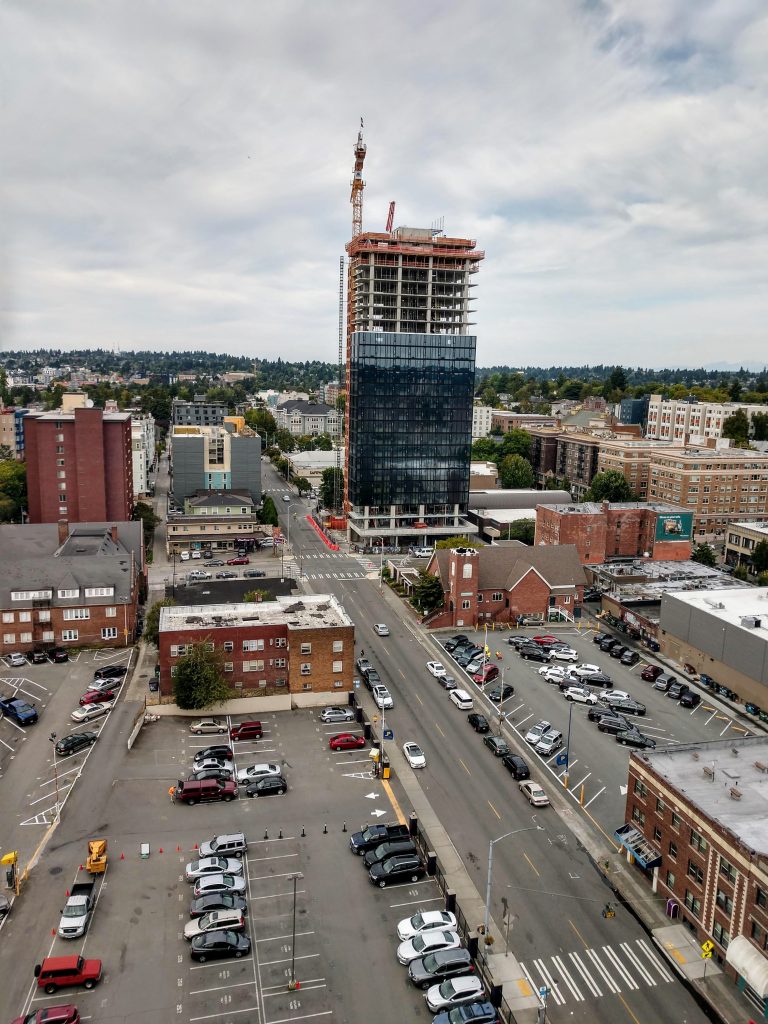
Several parking lots and lowrise buildings in the core of the U District all likely to soon be redeveloped as highrises. For example, developer Barrientos Ryan is proposing to build a 24-story apartment building with 227 homes where a Qdoba and Washington Federal bank branch now stands. The 34-story proposal, meanwhile, would replace a parking lot. While John Fox and his displacement coalition misleadingly stirred up concerns that MHA would tear down more affordable homes than it replaces, nobody is living at a parking lot or a one-story bank. Below are the proposed towers next to what they would replace.
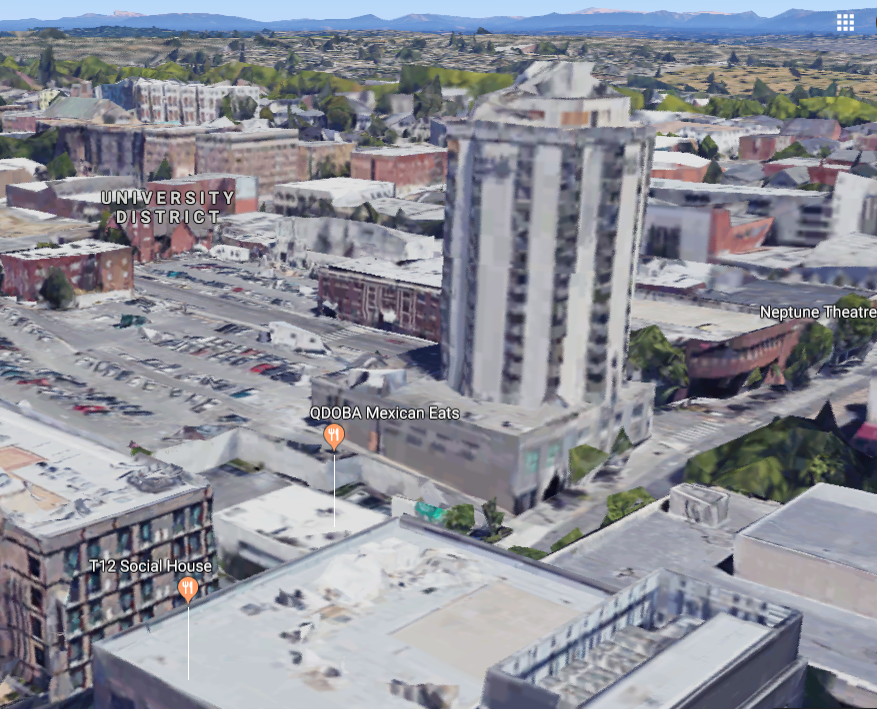
A one story building hosting a Qdoba and Washington Federal bank is slated to become a 24-story tower. (Google Maps) 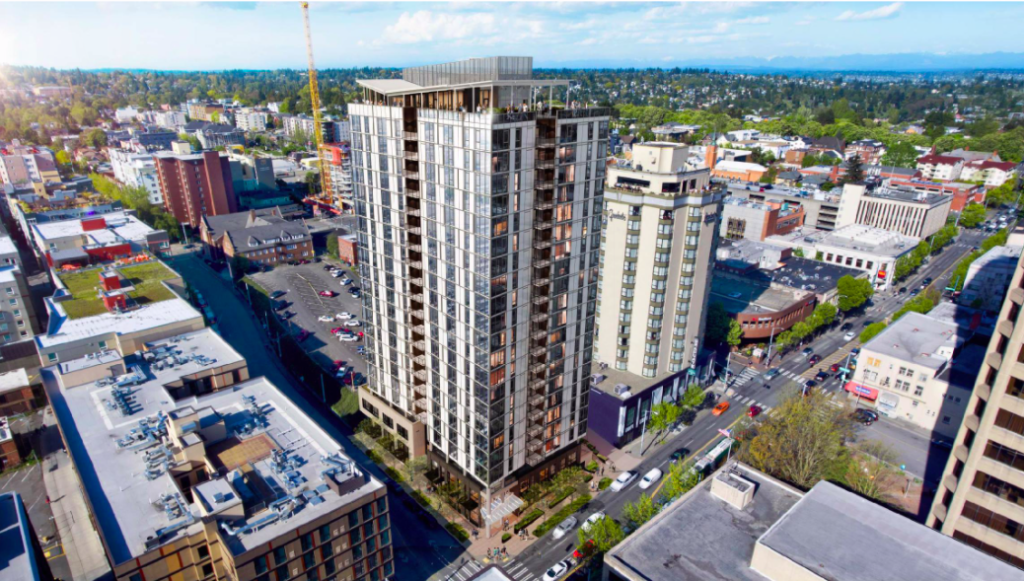
A rendering of the planned highrise development at 1200 NE 45th St would add 227 units of housing (and 105 parking stalls) steps away from future Link light rail. (Credit: Runberg Architecture Group)
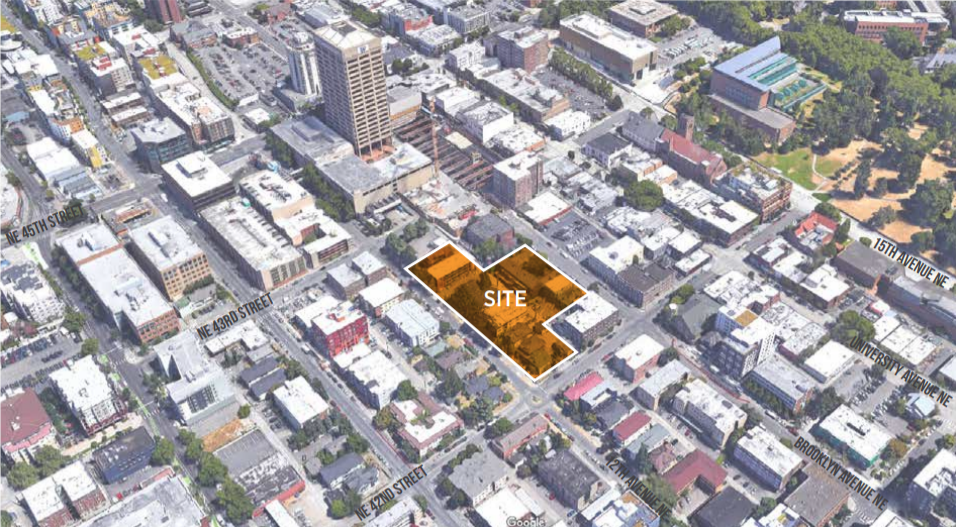
At 4220 12th Ave NE, Landmark Properties is proposing 446 student housing units and 184 parking stalls. (Credit: Ankrom Moisan) 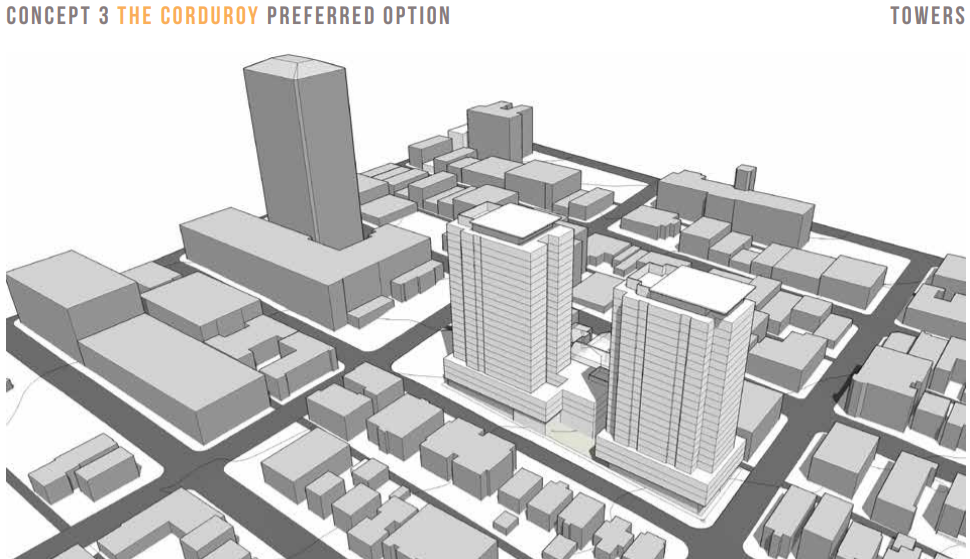
The twin 24-story towers compose 580,000 square feet, which would equal more than $12 million in MHA payments. (Credit: Ankrom Moisan)
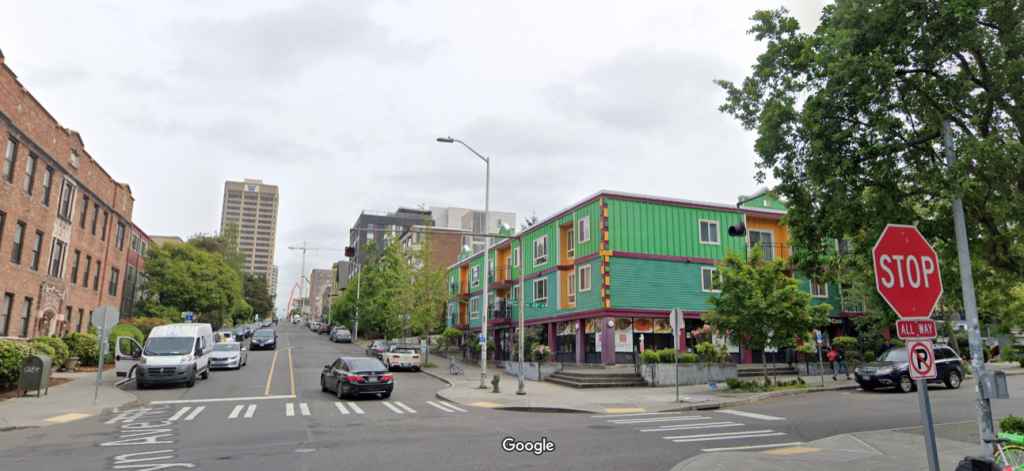
A three-story building with restaurants on the first floor presently occupies the site at 4143 Brooklyn Ave NE. (Google Maps) 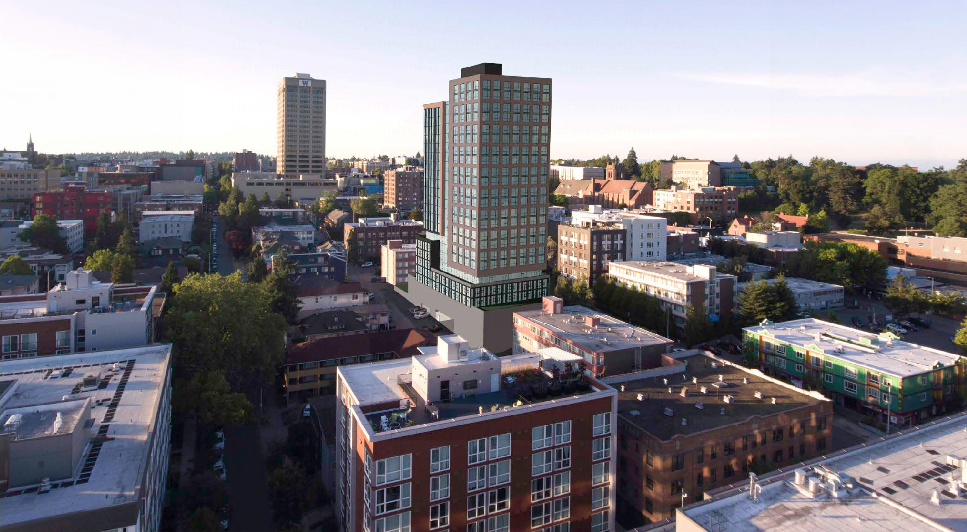
A 24-story tower with 260 homes and 100 parking stalls is proposed. (d/Arch)

A parking lot north of U District Station on Brooklyn Ave NE is tabbed for development to the tune of 202 homes. (Photo by author) 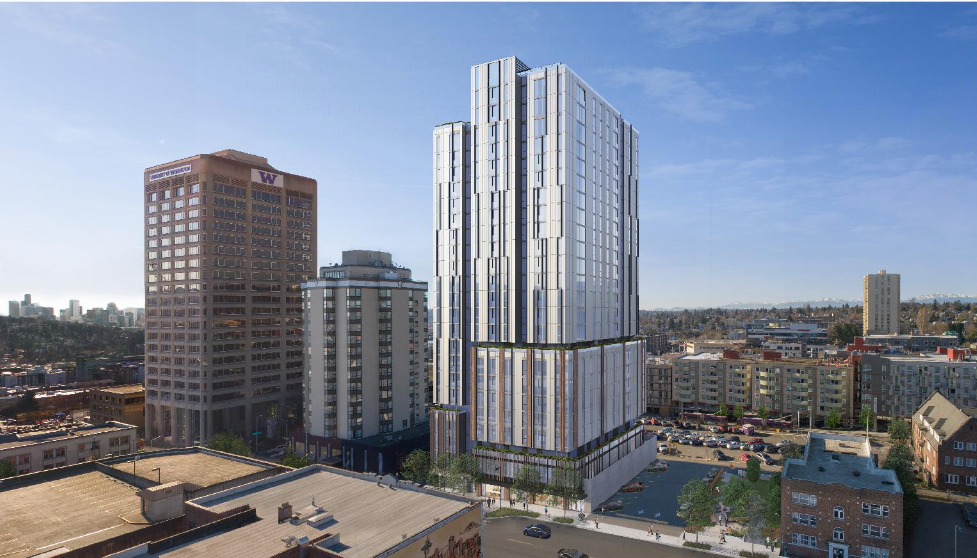
GGLO is designing a 25-story tower with 77 parking stalls at 4515 Brooklyn Ave NE. (GGLO)
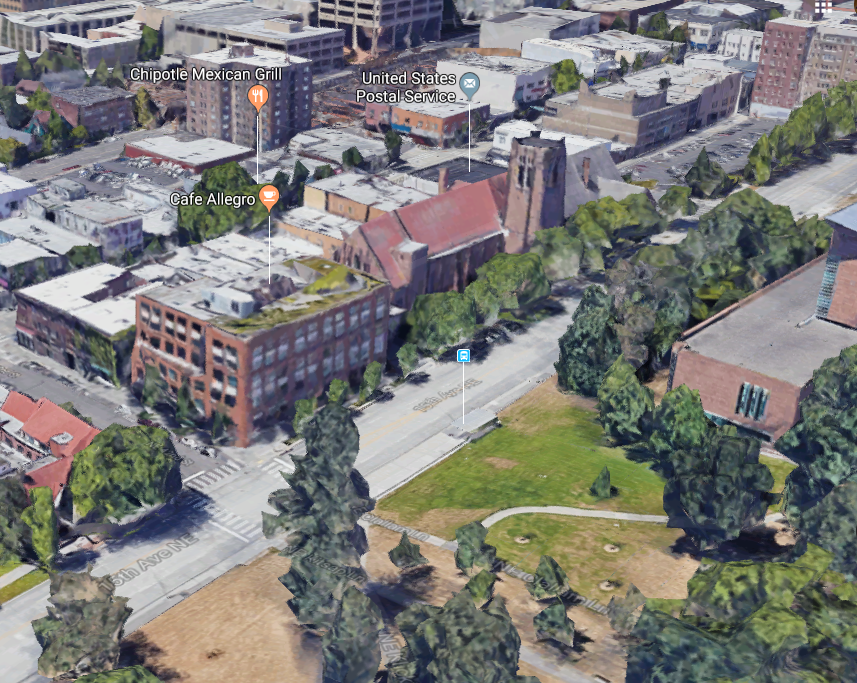
University Temple United Methodist is proposing to redevelop its church at 1415 43rd St NE with a new one with student housing overhead. (Google Maps) 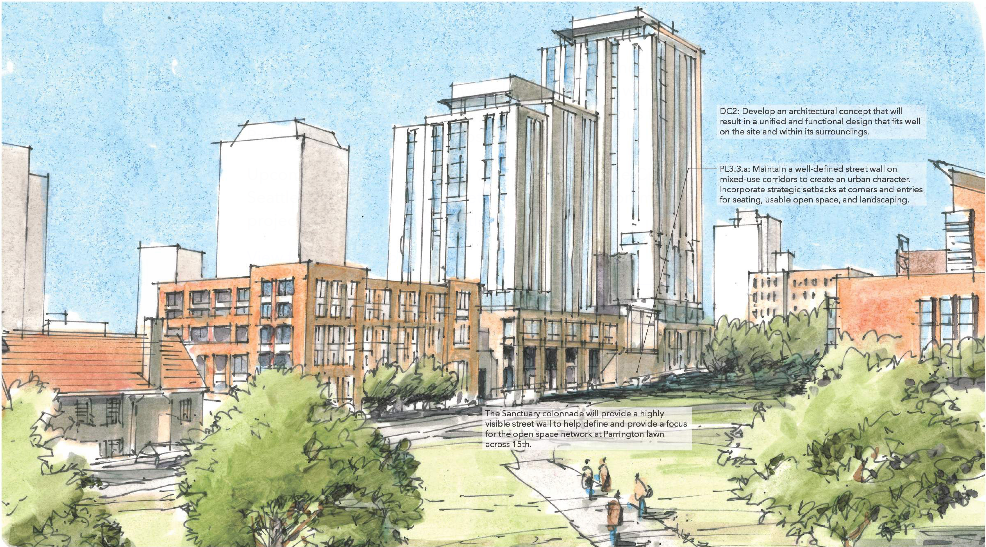
The proposal calls for a 22-story tower and a 12-story tower with 159 congregate units, 65 apartments, and 145 parking stalls. (Credit: GGLO)

Greystar is proposing a 22-story tower at 4126 12th Ave NE geared toward students. (Credit: Weber Thompson) 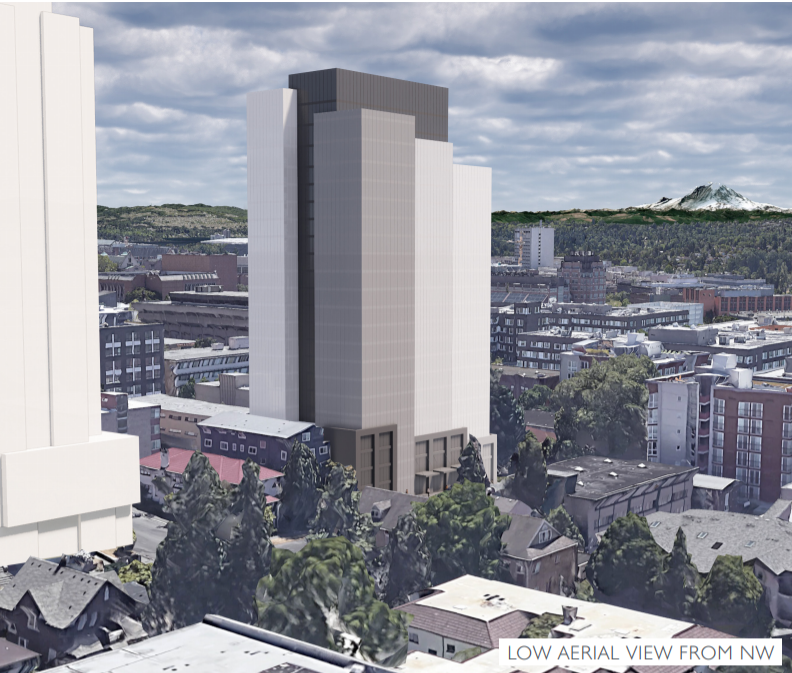
The preferred scheme is a terraced tower with 227 units and 46 parking stalls. (Credit: Weber Thompson)

The parking lot across from the AMC 10 theater may not be long for this world. (Google Maps) 
Blume Co. submitted a site plan September 23 to develop a 34-story tower at 4525 9th Ave NE, including open space, too. (VIA Architecture)

A proposal at 4105 Brooklyn Ave NE would reinforce the above historic forced masonry building while replacing the neighboring building with a 21-story tower. (Google Maps) 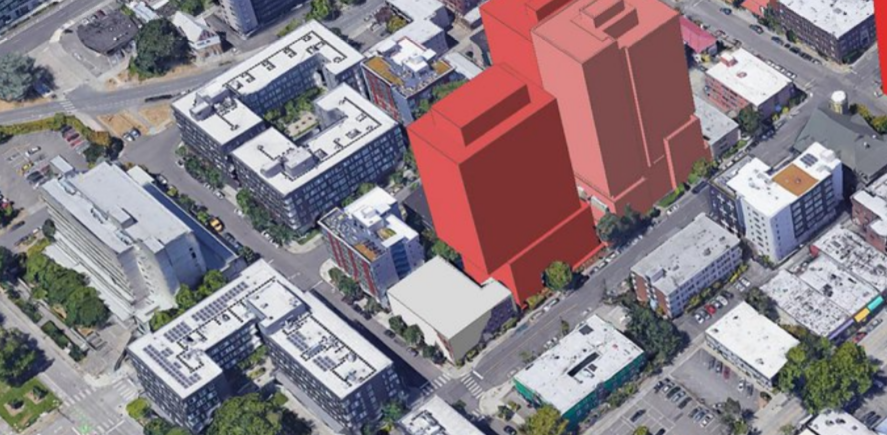
Lien Nishiwaki Architects haven’t yet submitted their EDG packet for their 300-unit tower, but here’s a rough massing by David Boynton.
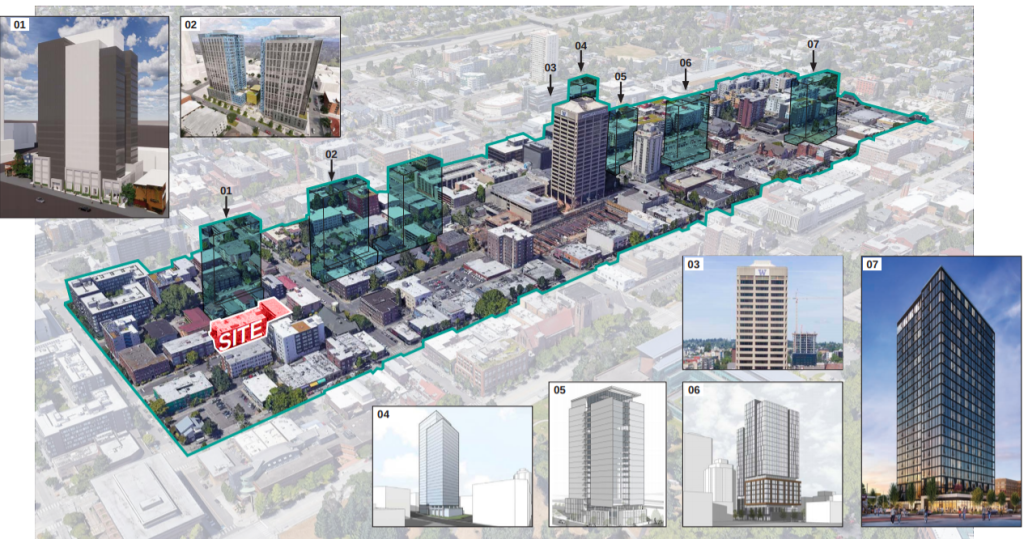
Getting to U District Station
The U District Mobility Plan had floated the idea of making Brooklyn Ave NE bus only and pedestrianizing NE 43rd St and University Way NE (The Ave), but the final plan for how pedestrians, cyclists, bus riders, and motorists will use the streets are still being fleshed out. The good news is that Mayor Durkan included funding for pedestrianizing NE 43rd St in her recently announced 2020 budget.
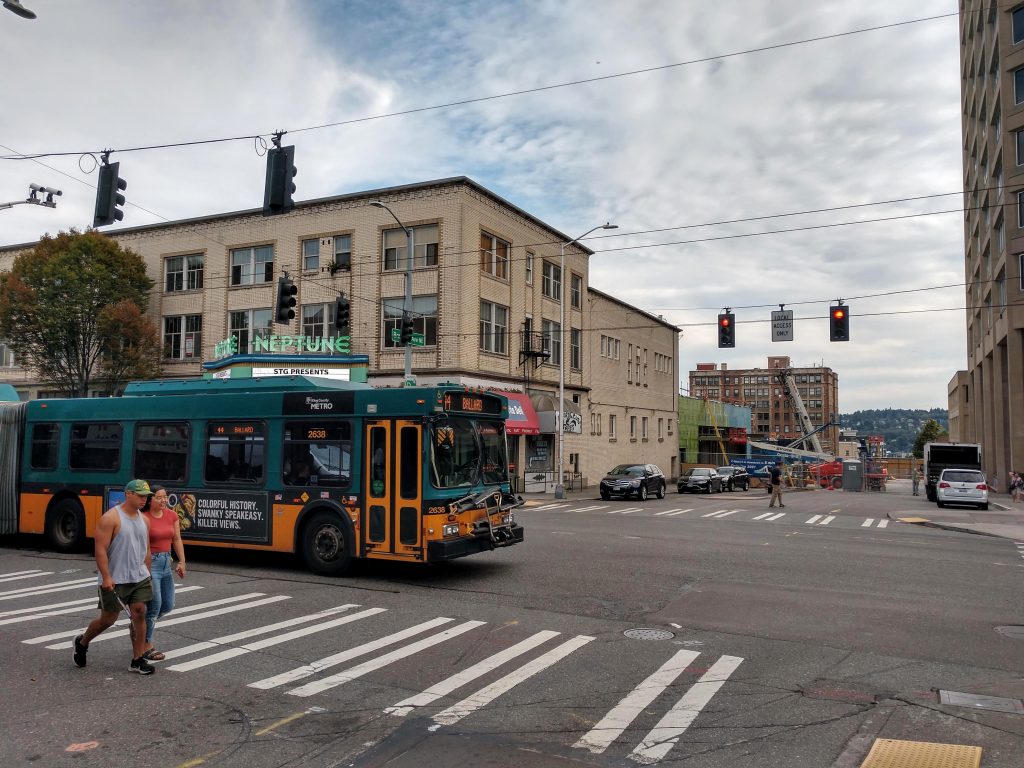
Another project that could make it quicker and more reliable to get the station is the RapidRide project for Route 44. Unfortunately, the Move Seattle “reset” put the upgrade of Route 44 in jeopardy, as the budget was spread too thin and prioritized elsewhere. It’s likely a matter of time, but it’s unclear when Seattle and King County Metro will have the funding to do it anytime soon. Still, the Seattle Department of Transportation (SDOT) could still dedicate a bus lane for the Route 44 to make things work a lot smoother, as we and the rest of the Move All Seattle Sustainably (MASS) coalition have urged the City to do. Another idea being considered is rerouting buses to pass closer to the station, facilitating transfers.
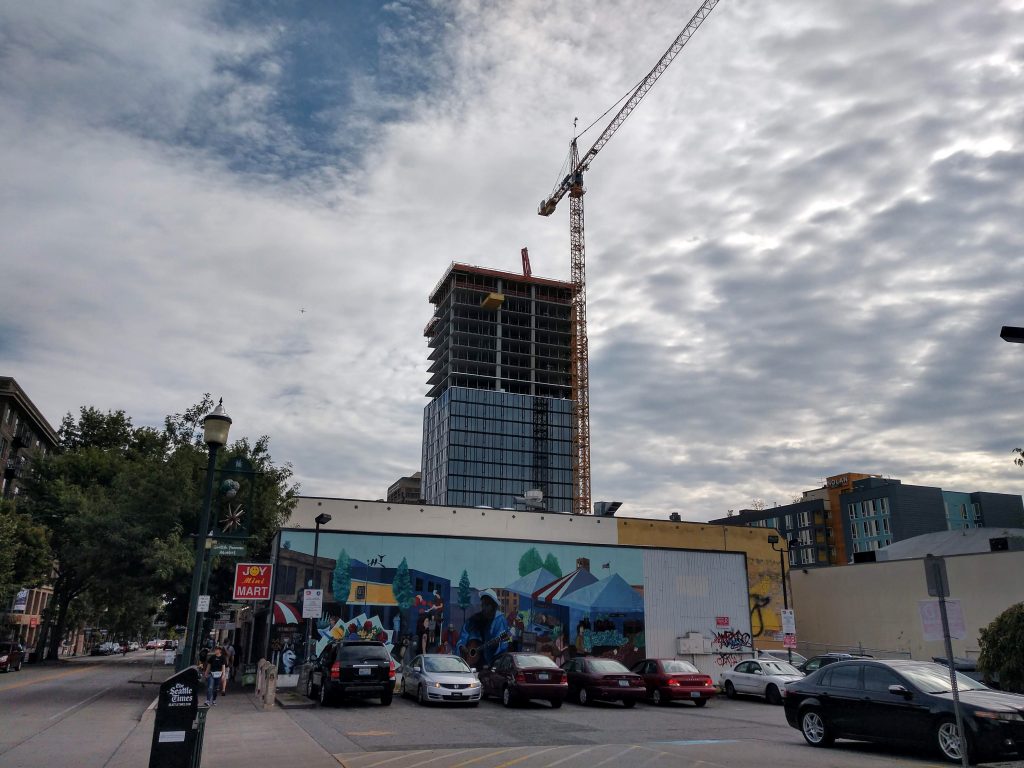
One important change advocates (especially climate activists) were instrumental in securing was a parking cap at UW. Seattle City Council responded to pressure to lower UW’s carbon footprint and added an amendment to the campus master plan setting a parking cap at 9,000 stalls, which means that the university will gradually need to reduce parking stalls from the 10,667 that exist today. The addition of a second light rail station near campus and the growing number of places linked to it should make that goal easier, but the neighborhood being safe to walk, roll, and bike around will also be key.
What to Do about The Ave
The Ave is another looming question for the neighborhood. Lined with bookstores, teahouses, gyro stands, noodle shops, tofu houses, cafes, and the like, the street was taken out of the 2017 MHA upzone. That exemption has been extended ever since, and Natalie Bicknell covered the City’s ideas to find a way out of The Ave impasse–or punt it another five years. The fear is that upzoning The Ave would accelerate displacement of small businesses that make The Ave what it is and are often owned and operated by immigrants.
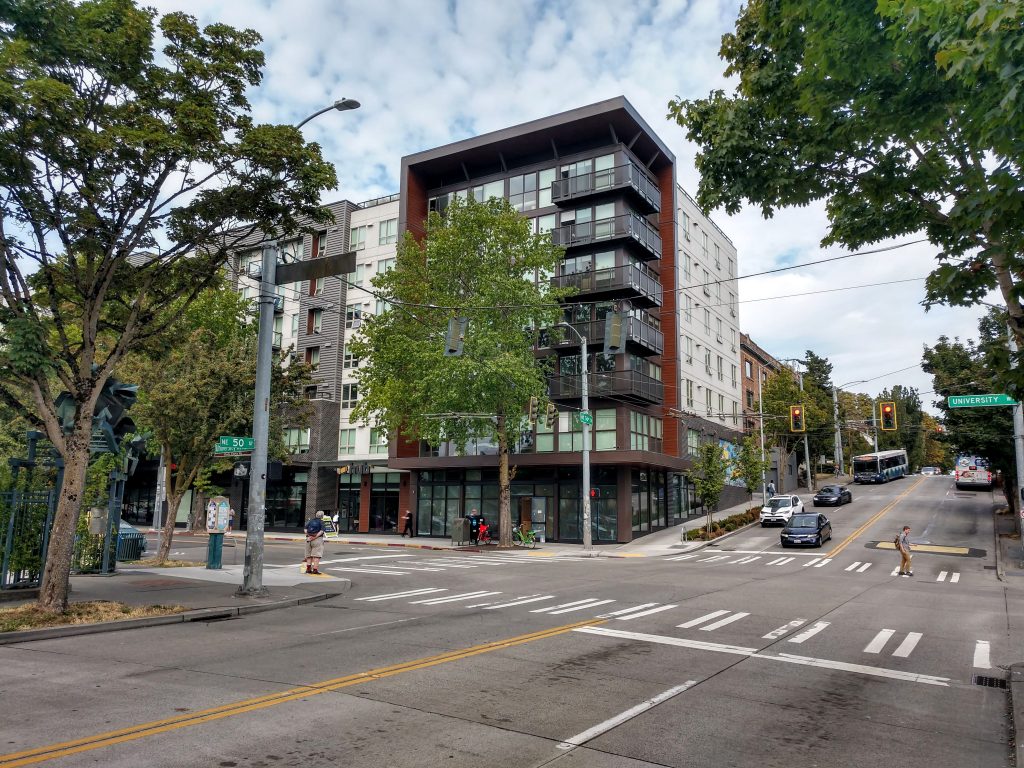
One policy the City is kicking around is making The Ave a special conservation district with tighter zoning. Both District 4 council candidates–Alex Pedersen and Shaun Scott–oppose upzoning The Ave, casting doubt on whether MHA will be implemented on the street. The danger here is that, even with the special district, the independent small businesses wouldn’t be saved, and national chains would still move in. Given that, Scott proposes going a step further and implementing commercial rent control on the street to more directly keep costs down for these small businesses–rather than using the blunt instrument of zoning and hoping for a good outcome. And unlike Pedersen, Scott supports broader zoning changes in the area to take the pressure off The Ave and address the exclusionary impact of single-family zoning, which is a big reason we endorsed Shaun Scott.
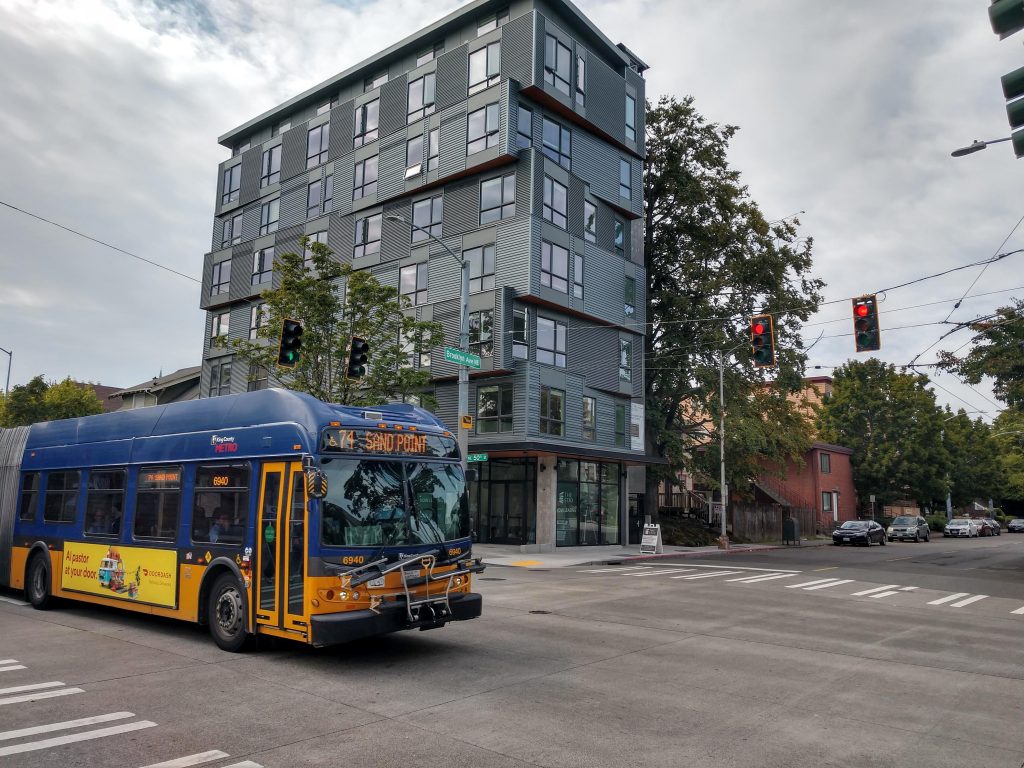
Beyond the zoning status, some are calling on the City to pedestrianize The Ave to improve the pedestrian and biking experience. On-street parking would have to go, but the hope is that a more walkable Ave would thrive as pedestrian and cyclist traffic increases, fed by the nearby light rail station. It would be safer for all involved.

All in all, the U District is a neighborhood that is embracing its future as a light rail hub and leading university. If we make the right decisions, the U District can lead the city (and perhaps even the nation) in designing its streets to be walkable, safe, and great places to relax. We can protect independent small businesses and those at risk of displacement while embracing growth and welcoming the next round of newcomers. Much work is ahead, but the U District is off to a great start.
Here’s part 1 (Northgate) and part 2 (Roosevelt) of my three-part Northgate Link transit-oriented development series if you missed them.
It’s our fall subscriber drive. If you enjoy journalism like this please become a monthly subscriber if you are able.
[give_form id=”74719″]
Doug Trumm is publisher of The Urbanist. An Urbanist writer since 2015, he dreams of pedestrian streets, bus lanes, and a mass-timber building spree to end our housing crisis. He graduated from the Evans School of Public Policy and Governance at the University of Washington in 2019. He lives in Seattle's Fremont neighborhood and loves to explore the city by foot and by bike.

